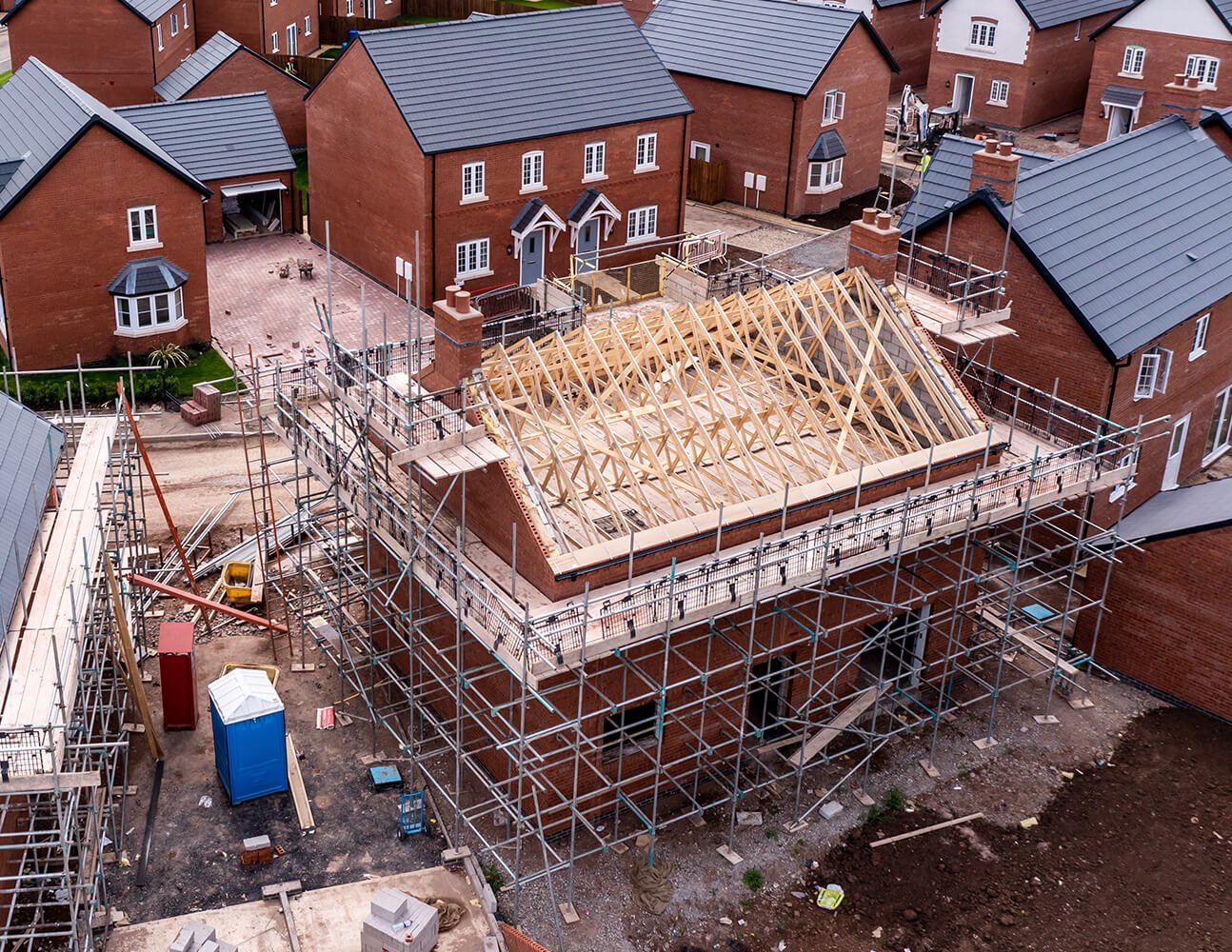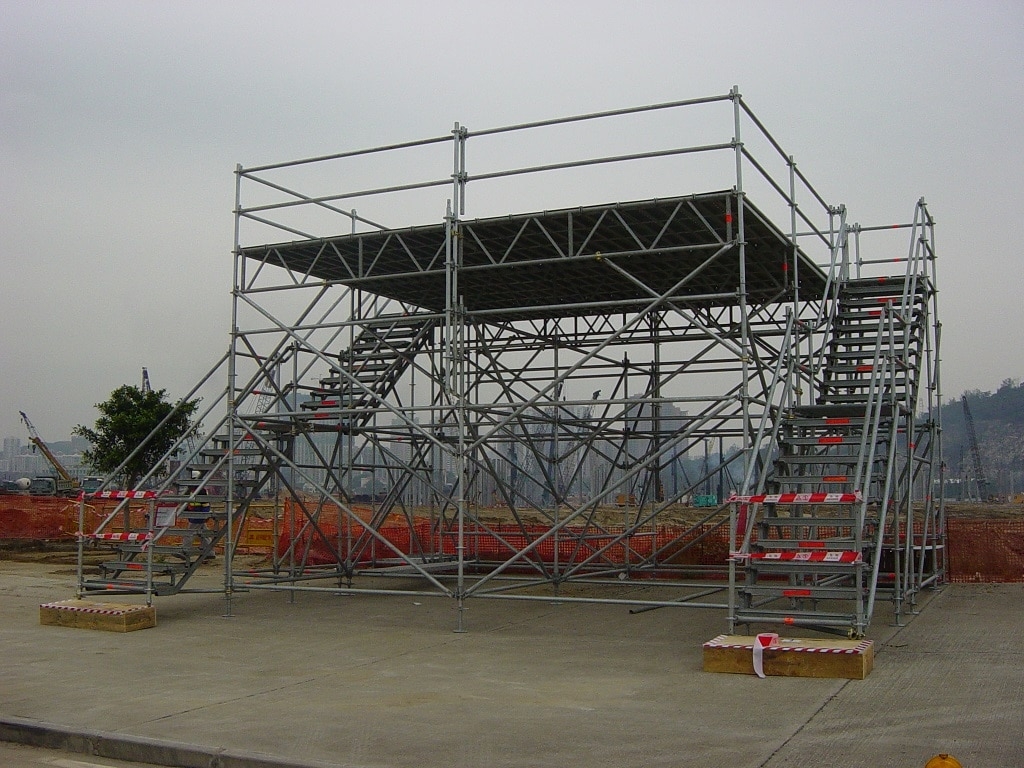Temporary Roof Scaffolding to Ensure Safe Working Conditions During Projects
Temporary Roof Scaffolding to Ensure Safe Working Conditions During Projects
Blog Article
Discovering the Numerous Sorts Of Scaffolding Made Use Of in Construction Projects
The construction sector depends greatly on different kinds of scaffolding to fulfill details job needs, each offering unique advantages and applications. Typical framework scaffolding supplies a durable foundation for general jobs, while suspended scaffolding is crucial for deal with skyscraper structures. Other options, such as system and rolling scaffolding, satisfy performance and mobility, specifically. Moreover, the cantilever variant shows vital in urban environments where room is constricted. Recognizing the nuances of these scaffolding types is crucial for optimizing safety and performance on building and construction websites, motivating a closer evaluation of their distinct features and applications.

Traditional Framework Scaffolding
Standard framework scaffolding is among the most commonly made use of methods in the building sector due to its effectiveness and versatility. This system includes upright and straight frames that are set up to create a steady platform for workers and materials. The major components consist of vertical posts, straight journals, and diagonal braces, which with each other provide a solid framework that can support considerable lots.
Among the essential benefits of typical framework scaffolding is its flexibility to different building and construction jobs, ranging from domestic structures to big commercial frameworks. The modular style enables simple setting up and disassembly, making it reliable for both temporary and long-term jobs. Additionally, the system can be customized in elevation and size, suiting different building layouts and website problems.
Safety and security is vital in scaffolding applications, and standard frame systems are equipped with guardrails and toe boards to protect against drops and ensure worker security. Regular assessments and adherence to safety guidelines are important in preserving the honesty of the scaffold (Scaffolding). Overall, traditional frame scaffolding continues to be a basic selection in the building and construction market, giving a reputable platform for labor and boosting overall job performance

Suspended Scaffolding
Suspended scaffolding uses a special service for building and construction jobs that call for accessibility to elevated surface areas, especially in situations where conventional structure scaffolding may be impractical. This kind of scaffolding is generally put on hold from the roof or top levels of a framework, using a system of ropes, platforms, and wheels to develop a working area that can be adapted to different elevations.
One of the key benefits of suspended scaffolding is its flexibility. It can be conveniently rearranged or reduced to suit adjustments in construction demands, making it ideal for jobs such as home window installment, façade work, and maintenance on skyscrapers. In addition, the marginal footprint of suspended scaffolding enables much better use ground space in city atmospheres, where space is commonly limited.
Safety is an essential consideration in the use of put on hold scaffolding. Overall, put on hold scaffolding supplies a reliable and efficient solution for accessing hard-to-reach areas in various building circumstances, boosting both performance and safety on website.
System Scaffolding
System scaffolding, commonly considered a modern-day solution in the scaffolding sector, consists of pre-engineered parts that can be rapidly assembled and adjusted for different construction projects. Scaffolding. This sort of scaffolding is characterized by its modular design, which allows for convenience and efficiency on work websites, suiting various heights and structural requirements
Normally made from high-strength steel or aluminum, system scaffolding offers enhanced resilience and stability. The parts include upright blog posts, horizontal journals, and diagonal braces, which adjoin securely, making sure a durable structure. The design frequently incorporates standardized installations, streamlining assembly and disassembly procedures, therefore minimizing labor time and costs.

Rolling Scaffolding
Rolling scaffolding is a flexible choice to traditional set scaffolding, created for wheelchair and simplicity of usage on building and construction sites. This sort of scaffolding is composed of a system sustained by structures with wheels, permitting employees to quickly transfer it as needed. The flexibility attribute substantially enhances productivity, as it lessens downtime connected with assembling and taking apart repaired scaffolding.
Generally built from light-weight products such as aluminum or steel, rolling scaffolding provides a tough yet portable solution for jobs requiring regular repositioning - Scaffolding. It is specifically helpful in tasks such as painting, drywall installation, and electrical job, where access to numerous heights and areas is needed
Security is vital in rolling scaffolding style, with functions such as securing wheels to stop unintended motion scaffold flutter when in operation, and guardrails to secure workers from drops. In addition, numerous versions are adjustable in height, suiting various job needs.
Cantilever Scaffolding

The design of cantilever scaffolding commonly involves utilizing brackets or arms anchored to a building or framework, making it possible for the system to extend exterior safely. Safety and security is vital; thus, these scaffolds have to be engineered to withstand ecological conditions and various loads. Normal inspection and upkeep are important to ensure architectural honesty and employee safety.
Cantilever scaffolding is preferred for its flexibility and efficient use space, making it a popular option in city atmospheres where area restraints prevail. It promotes less complicated access to high elevations, inevitably adding to the overall effectiveness of building jobs. Just like all scaffolding types, appropriate training and adherence to security criteria are critical for workers making use of cantilever scaffolding.
Conclusion
In conclusion, the diverse kinds of scaffolding utilized in building and construction jobs each serve distinctive purposes customized to particular website needs. Standard frame scaffolding supplies security, while suspended scaffolding uses flexibility for raised jobs. System scaffolding promotes quick setting up, and rolling scaffolding improves mobility for varying job atmospheres. Cantilever scaffolding properly addresses barriers in city settings. Comprehending these scaffolding types is scaffolder cv important for enhancing safety and security and efficiency in building and construction, ultimately adding to the effective conclusion of projects.
Typical structure scaffolding provides a durable structure for basic jobs, while put on hold scaffolding is important for job on high-rise frameworks.Moving scaffolding is a flexible option to standard set scaffolding, designed for mobility and convenience of use on navigate to this site building websites. As with all scaffolding types, proper training and adherence to security requirements are crucial for workers making use of cantilever scaffolding.
Traditional structure scaffolding supplies stability, while suspended scaffolding uses versatility for elevated tasks. System scaffolding promotes quick setting up, and rolling scaffolding enhances movement for varying job atmospheres.
Report this page